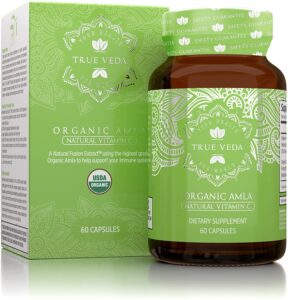One of the oldest traditional systems of medicine (TSMs) that are widely used today is ayurveda. This conventional medical system’s ancient knowledge is still not fully understood. The intersection of the wealth of knowledge from various traditional medical systems may open up new directions in the search for natural drugs. Aside from other barriers to the discovery of plant-based medicines, the main obstacle to their convergence is the lack of knowledge of the differences and overlaps between the theoretical doctrines of these systems. This overview tries to highlight the long history and fundamental ideas of Ayurveda. This would promote the strengthening of similarities, assist in gaining a deeper understanding of conventional medical systems, and help emerging academics, researchers, and practitioners overcome obstacles to their worldwide acceptance and harmonization.

One of the most well-known ancient medical systems that has endured and thrived for decades is ayurveda. The vast knowledge of nature-based medicine, the relationship between the structure and function of the human body and nature, and the elements of the cosmos that interact and have an impact on living things ensure that this system will continue to thrive for centuries to come. The field’s researchers, practitioners, and experts, who are charged with preserving and fostering the future development of traditional systems of medicine (TSMs), still have a lot of opportunities to investigate. However, there is a gap in the sharing of information from systems around the world because of numerous hurdles, including a lack of literary sources in other languages and a lack of knowledge about the fundamental ideas and histories of systems from various ethnic origins.
History of Ayurveda
The history of Ayurveda dates back to the second century BC. The ancient schools of Hindu philosophy known as Vaisheshika and the school of logic known as Nyaya formed the groundwork for ayurveda. It was founded at the same time as the Nyaya and Vaisheshika schools of thought, and it is connected to the manifestation framework known as Samkhya. The Vaisheshika School advocated drawing conclusions and forming opinions on a patient’s pathological condition in order to guide treatment. As opposed to this, Nyaya School taught that before beginning treatment, one should have a thorough understanding of the patient’s condition as well as the state of the disease. The attributes of any item are divided into six categories by the Vaisheshika school: substance, particularity, activity, generality, inherence, and quality, which are known in Sanskrit as Dravya, Vishesha, Karma, Samanya, Samavaya, and Guna, respectively. Subsequently, the Nyay-Vatika school was created in collaboration with the Vaisheshika and Nyaya schools. In later years, the nyya-vaieika school helped spread knowledge of Ayurveda and brought honor to traditional knowledge. The Hindu Deity Brahma, who is regarded as the universe’s creator, is considered to be the source of Ayurveda, both before these schools were founded and even now. For the benefit of humanity, it is thought that the universe’s creator gave the sages this comprehensive understanding of healing. The knowledge of traditional remedies was transmitted from the sages to the disciples, who then passed it on orally and through various documents to the general public. Poems called “Shlokas” were used to convey information about the medicinal properties of the herbs. Sages utilized these to explain how to use therapeutic plants. The Yajur Veda, Rig Veda, Sam Veda, and Atharva Veda are four renowned knowledge collections (Vedas) that are thought to constitute the foundation of the Hindu healing system. The Rig Veda, the most well-known of the four Vedas, contains 1028 Shlokas and names 67 different plants.
Basic Principles of Ayurveda
Vayu (Air), Jala (Water), Aakash (Space or ether), Prithvi (Earth), and Teja are the five components that make up the universe (Fire). In different combinations, these five elements—known in Ayurveda as Pancha Mahabhoota—are said to make up the three primary humors of the human body. The Vata, Pitta, and Kapha doshas—collectively known as the “Tridoshas”—are the three humors that govern the body’s fundamental physiological processes. Each of the three doshas also has five subdoshas. According to Ayurveda, the body is made up of the Saptadhatus (seven tissues), Rasa (tissue fluids), Meda (fat and connective tissue), Rakta (blood), Asthi (bones), Majja (marrow), Mamsa (muscle), and Shukra (semen), as well as three Malas (body waste products), Purisha (feces), Mutra (urine), and Sweda (sweat). Dryness intensifies the effects of the vata dosha, which regulates cellular transport, electrolyte balance, and waste product disposal. Body temperature, synchronization of the visual nerves, and control of appetite and thirst are all governed by the Pitta dosha. Pitta is made worse by heat conditions in the body. Sweet and fatty foods enhance kapha dosha and lubricate the joints to ensure proper joint function. It is claimed that Vata controls the body’s catabolism, Pitta controls its metabolism, and Kapha controls its anabolism. Maintaining a balance between the three doshas and other elements is necessary for good health. Any unbalance between the three results in a diseased or unhealthy state. The term “Sapta Dhatus” refers to the seven different types of tissues that make up the human body. The efficient physiological operation of the human body depends on the cooperation of these seven tissues. The Rakta Dhatu, which resembles blood, controls the movement of blood cells and the delivery of blood constituents to the body. The Mamsa Dhatu (muscular tissue) gives the Meda Dhatu support in the form of skeletal muscles (adipose fat). The Majja Dhatu is made up of the bone marrow and fluids necessary for the oleation of the bones and their proper function, whereas the Asthi Dhatu is made up of the body’s bones. The reproductive systems of the body are operated by the Shukra Dhatu. The Tri Malas and Trayo Dosa Agni are two additional significant aspects taken into account in the concept of Ayurveda in addition to the Doshas and Dhatus. The three different forms of waste products known as Tri Malas are produced by the body’s metabolic and digestive processes. The Mutra (urine), Purisa (feces), and Sveda make up this group (sweat). According to Ayurveda, if the equilibrium between the Tridoshas is not preserved, the body’s waste products are not adequately eliminated, and this results in further difficulties such as diarrhea, constipation, asthma, rheumatoid arthritis, and other issues. Urinary tract infections, cystitis, and stomach pain can result from not getting the Mutra Mala (urine) out of the body.
According to Ayurvedic teachings, “Agni” is the term for the biological fire that powers all of the body’s metabolic processes. The digestive fire category, known as Jatharagni, is the most significant of the thirteen kinds of agni found in a human body. Jatharagni is closely related to the body’s Pitta and, ultimately, Vatta. Pitta levels will rise along with any associated symptoms if the body’s digestive fire is aggravated by conditions when there is an increase in acidity. The control of regular microbiota, healthy digestive processes, and the delivery of energy to the entire body depend on digestive fire.
There are eight “shtanga Ayurveda” disciplines used in practice. They are: Vajikarana (treatment through aphrodisiacs and eugenics), Kayachikitsa (internal medicine treatment), Bhootavidya (treatment of psychological disorders), Kaumar Bhritya (pediatric treatment), Rasayana (study of geriatrics), Shalya (surgical treatment), Shalakya (otorhinolaryngological and ophthalmological treatment), and Agada Tantra (toxicological studies). Ayurveda has gained significant popularity around the world thanks to its extensive understanding of plants, minerals, and animal-based goods as well as the aforementioned philosophical ideas.
True Veda: Organic Amla Capsules

The majority of vitamin C pills on the market are made from ascorbic acid, a synthetic form of vitamin C. The majority of this synthetic vitamin C is made from GMO corn and was initially treated with acetone (think nail polish remover). Ayurveda-inspired vitamin C supplement developed by True Veda from Alma or Amalaki, in its whole food form, is made without the use of fillers, binders, additives, or preservatives and is high in bioflavonoids. You can never be certain that a product is truly organic until the USDA organic stamp of approval is prominently displayed. To become certified, they must adhere to stricter regulatory requirements, but they do this to ensure that you receive a product that is completely natural for both the environment and your body.
True Veda: Bacopa Monnieri Capsules

By adopting our ground-breaking and patented Natural Fusion Extract technology, you can stop poisoning your body with harmful solvents and alcohol byproducts from conventional supplements. Using only water and pure carbon dioxide gas, True Veda naturally extracts all the plant’s active elements, giving you a comprehensive supplement that is incredibly pure and concentrated. The fully organic certified products supplements include only what nature intended and don’t have any unwelcome additives. A part of the revenues from our morally upright family-run business are given to several charities and deserving organizations. Both the “Beauty Shortlist Best Ayurvedic Health Brand 2022” and the “Healthcare & Pharmaceutical Awards Best Organic Herbal Supplement Brand – 2022” have recognized us as winners.
Allies of Ayurveda
Ayurveda is the oldest, most commonly acknowledged, practiced, and prosperous indigenous system of medicine in India. The country has a rich history of traditional systems of medicine centered on six systems. Unani, Siddha, Homeopathy, Yoga, and Naturopathy are some of the various complementary medical systems practiced in India. Among the major Indian medical systems, Ayurveda is the most popular and has been practiced throughout history. The Siddha, Homeopathy, and Unani systems of medicine are the next most popular ones after Ayurveda. The field of naturopathy is continually growing, and in the future it might become a thriving medical system. Yoga is a complementary medical approach that addresses a person’s physical, mental, and spiritual well-being.
Conclusion
Using time-tested herbal formulas and holistic therapeutic techniques, Ayurveda has a long history of promoting people’s health and well-being. According to Ayurveda, disease can result from any form of detachment from nature, as health is seen as a reflection of a person living in complete harmony with it. Ayurvedic herbs have been regarded as the cure for a variety of health issues since antiquity. Herbal medicines’ continually rising popularity worldwide might also be ascribed to the fact that they have few to no negative effects. This is due to the fact that Ayurveda medications contain a thoughtful combination of herbs, oils, and spices recognized for their superior healing powers. These herbal preparations are made using the procedures outlined in the earliest Ayurvedic scriptures. There is no limit to what you can accomplish for your health and wellbeing with the benefits of Ayurveda therapy. By using Ayurvedic medications, you can achieve the ideal balance and harmony in your body, encourage detoxification, and cleanse the system by getting rid of any built-up toxins. These herbal preparations frequently have a remarkable impact on the body and encourage internal healing. Years of study, tests, and innovations have gone into their creation. The basis for how Ayurveda treatments function is the idea that these drugs balance the doshas.




